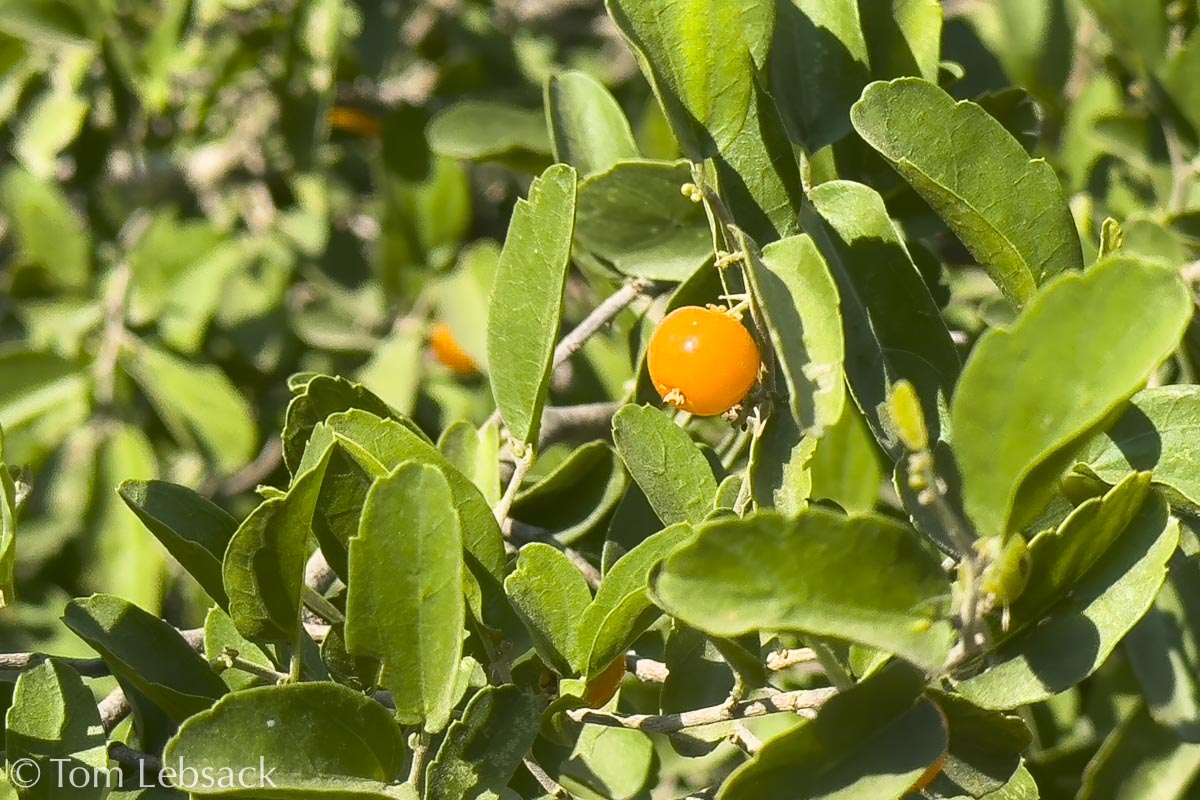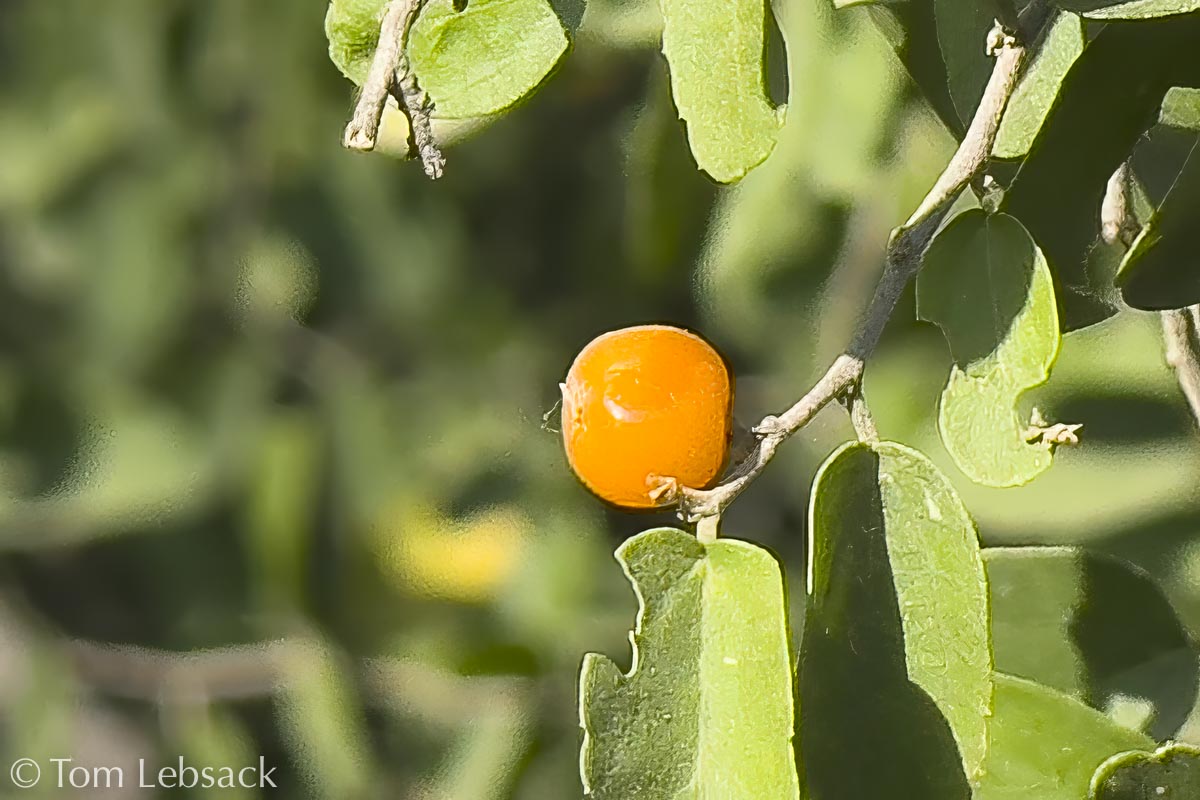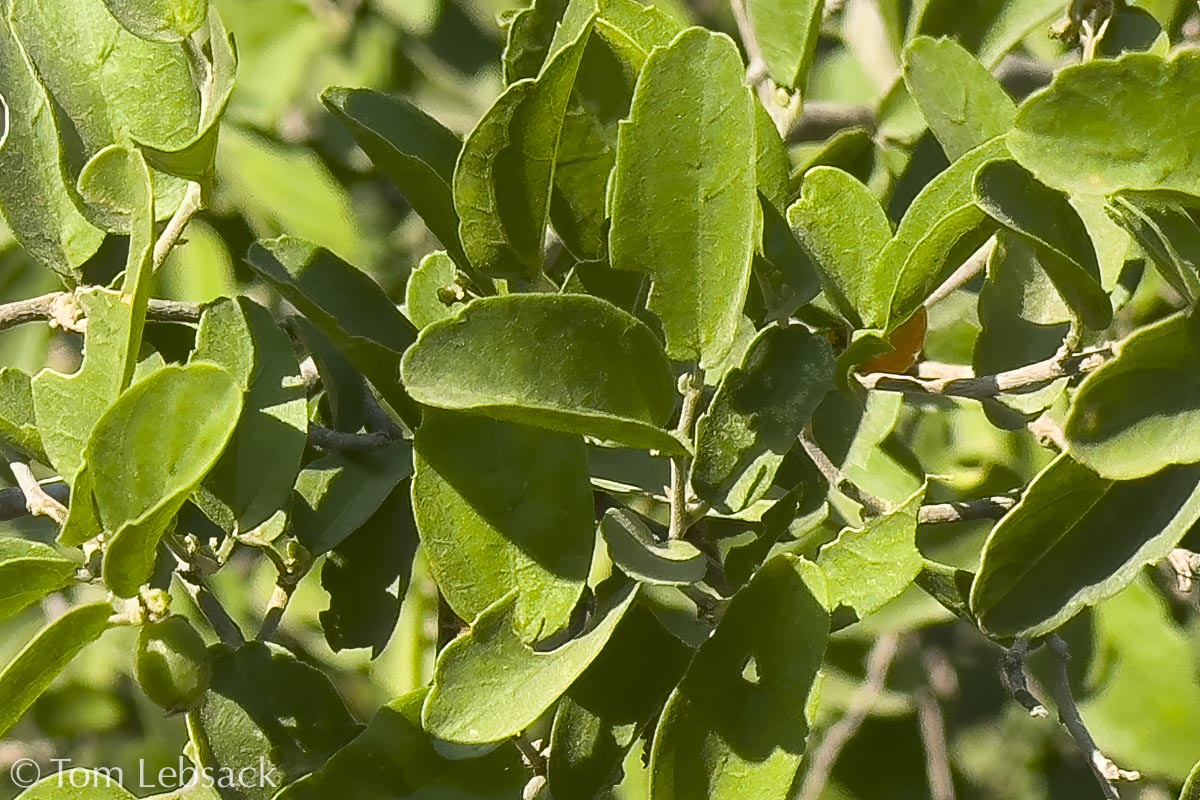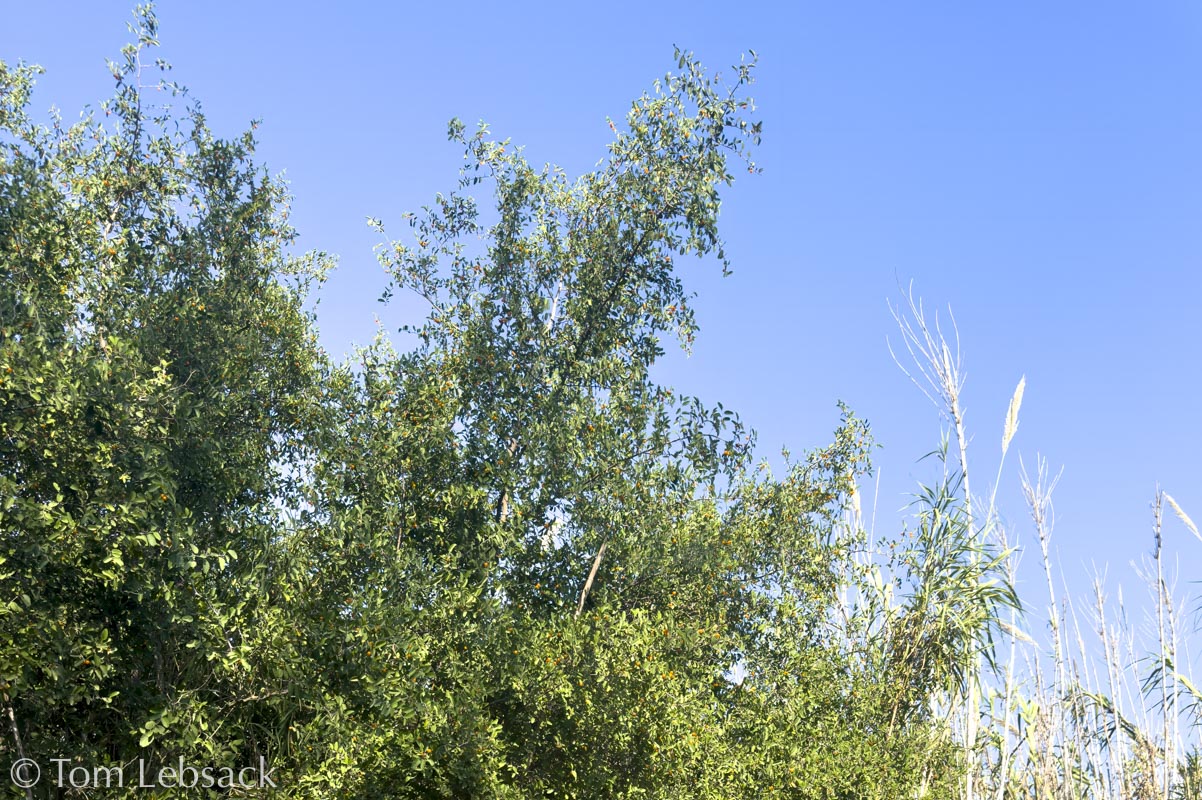Texas Wildbuds
Celtis pallida
(Desert Hackberry)
| Scientific Name | Celtis pallida (Celtis ehrenbergiana) | USDA PLANTS Symbol | CEPA8 |
| Common Name | Desert Hackberry, Spiny Hackberry | ITIS Taxonomic Serial No. | 19044 |
| Family | Cannabaceae* (Hemp) | SEINet Reference |
Click Here |
| Description | Habitat: Gravelly or sandy soils in canyons, mesas, desert washes and floodplains, brushland, and grasslands, often forming thickets. Plant: Shrubs up to 10 ft. tall; spreading, zig-zagging branches have whitish-gray bark; thorns are single or in pairs, up to 1 inch long. Leaves: Thickish blades are ovate to ovate-oblong or elliptic up to 1.2 inches long and 0.6 to 0.8 inches wide; margins are entire or crenate-dentate, tips are rounded to acute and the surfaces are scabrous (rough). Inflorescence: Small, inconspicuous white/green flowers appearing with new leaves, singly or in small cymes; both staminate, pistillate and bisexual flowers; no petals; 5 to 6 calyx lobes, 4 to 5 protrudung stamens and 2 styles. Bloom Period: February to May. Fruit : Ovoid, shiney orange, yellow, or red, drupes (fleshy fruit with a pit), about 1/4-inch long. References: "Manual of the Vascular Plants of Texas" by Correll and Johnston, Southwest Desert Flora and SEINet. *Note: Some authorities consider hackberries to be in the Elm family (Ulmaceae). |
BONAP Distribution Map C. ehrenbergiana Map Color Key |
Texas Status: Native |
Banner photo of Castilleja indivisa and Lupinus ssp. taken along FM 1323 north of Johnson City, Blanco County
© Tom Lebsack 2025
Every attempt is made to provide accurate, up-to-date, and relevant information, but the completeness or accuracy of any information presented on this website cannot be guaranteed. I use authoritative references to insure high standards of accuracy and review and update the information frequently.




